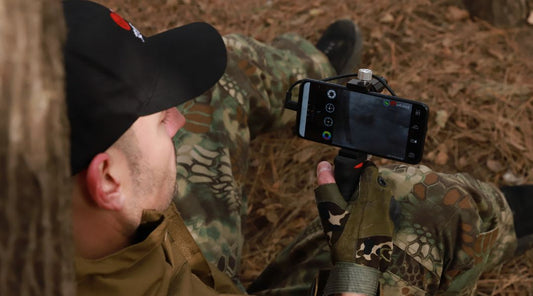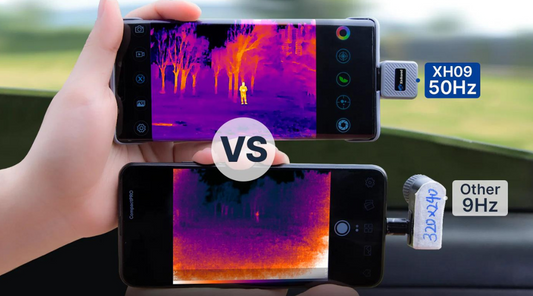Thermal Imaging Cameras: How to Read Specifications
Thermal imaging cameras have become indispensable tools in various industries, enabling professionals to visualize heat patterns and temperature variations. However, understanding the specifications of these devices is crucial for unlocking their full potential.
1. Key Components of Thermal Imaging Cameras
1.1 Infrared Sensor Technology:
Thermal cameras rely on advanced infrared sensor technology to detect and capture thermal radiation. The sensitivity and type of sensor play a crucial role in the camera's performance.
1.2 Lens and Field of View:
The lens and field of view determine the scope of the thermal image. A wider field of view is beneficial for capturing larger areas, while specific lenses may be required for detailed inspections.
1.3 Image Resolution and Pixel Count:
Higher resolution and pixel count results in clearer thermal images. Understanding the relationship between resolution and image quality is essential for accurate analysis.
1.4 Temperature Range and Sensitivity:
The temperature range a camera can measure and its sensitivity to temperature differences are vital specifications. This information ensures the camera is suitable for your intended applications.
1.5 Thermal Sensitivity and NETD:
Noise Equivalent Temperature Difference (NETD) is a measure of the camera's sensitivity to temperature variations. Lower values indicate better performance. Thermal sensitivity is crucial for detecting subtle temperature differences.

2. Understanding Image Display and Interpretation
2.1 Color Palettes:
Thermal cameras use different color palettes to represent temperature variations. Familiarizing yourself with these palettes enhances your ability to interpret thermal images accurately.
2.2 Thermal Span and Level Adjustments:
Adjusting the thermal span and level allows you to focus on specific temperature ranges, enhancing the visibility of thermal anomalies in different scenarios.
2.3 Image Fusion Capabilities:
Some thermal cameras offer image fusion, combining thermal and visual images for a more comprehensive view. Understanding these capabilities enhances the interpretability of complex scenes.

3. Navigating Specifications for Accuracy
3.1 Calibration and Accuracy Considerations:
Calibration ensures the camera provides accurate temperature measurements. Understanding the calibration process and accuracy specifications is crucial for reliable results.
3.2 Measurement Modes and Settings:
Different measurement modes cater to diverse applications. Knowing how to navigate these modes ensures you can optimize the camera for specific tasks.
3.3 Importance of Emissivity Settings:
Emissivity settings impact the accuracy of temperature readings. Adjusting these settings based on the material being observed is essential for precise measurements.

4. Connectivity and Integration Features
4.1 Data Storage and Export Options:
Evaluate the camera's data storage capacity and export options to ensure compatibility with your workflow. Consider features like SD card slots and USB connectivity.
4.2 Integration with Other Devices and Software:
Seamless integration with other devices and software enhances the camera's versatility. Check for compatibility with third-party applications and systems.
4.3 Wireless Capabilities and Remote Monitoring:
Wireless capabilities enable remote monitoring and data transfer. Assess these features if real-time monitoring or remote collaboration is essential for your work.

5. Battery Life and Durability
5.1 Battery Type and Capacity:
Consider the type and capacity of the camera's battery. Longer battery life is crucial for extended fieldwork, and understanding the power requirements is essential for planning.
5.2 Operating Temperature Range:
The camera's operating temperature range indicates its resilience in challenging environmental conditions. Ensure the camera can withstand the conditions of your intended use.
5.3 Ingress Protection (IP) Rating:
An IP rating reflects the camera's resistance to dust and water. A higher IP rating indicates better durability, particularly in harsh environments.

6. Cost Considerations and Budgeting
6.1 Value for Money:
Balancing features and cost is key. Consider the long-term benefits of investing in a camera that aligns with your specific needs and applications.
6.2 Long-Term Investment Perspective:
View the purchase as a long-term investment. Consider factors such as software updates, support, and warranty to ensure the camera remains a valuable asset over time.
7. Tips for Making Informed Purchases
7.1 User Reviews and Testimonials:
Utilize user reviews and testimonials to gather insights from professionals who have hands-on experience with the camera you're considering.
7.2 After-Sales Support and Warranty:
Consider the level of after-sales support and the warranty offered. A reliable support system enhances the overall value of your purchase.

Understanding the specifications of thermal imaging cameras is vital for making informed decisions. By delving into the key components, image interpretation features, accuracy considerations, connectivity, durability, and cost factors, you empower yourself to choose the right thermal camera for your specific needs. Make sure to explore real-world applications, learn from case studies, and heed practical tips for a well-rounded understanding. Happy thermal imaging!




